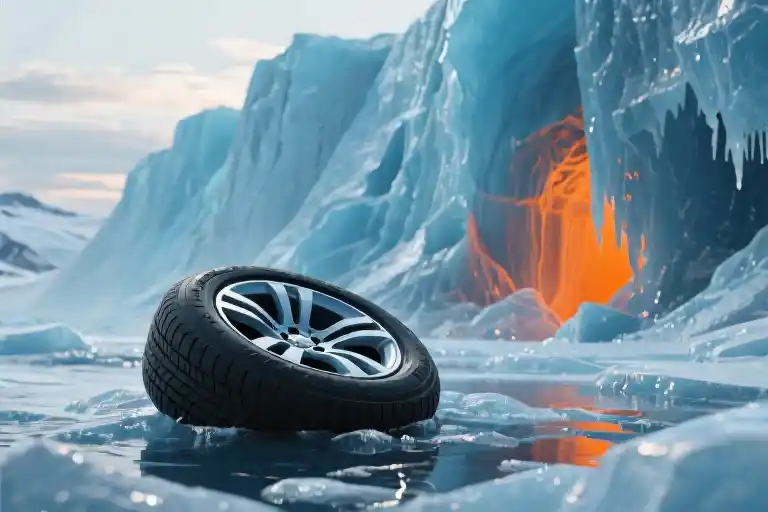The crumpled genetic test results stare up at me from the coffee table, its highlighted section screaming \”DRD4-7R variant detected\” in mocking boldface. Beside it, my carbon footprint calculator glows ominously on the laptop screen – 18.7 metric tons for last year alone, with 73% coming from flights. These two documents shouldn’t belong in the same universe, yet here they are, the twin birth certificates of my existential crisis as a modern traveler.
We’ve all heard that tired mantra about travel broadening the mind so many times it’s lost meaning. What we don’t talk about is how it also broadens our atmospheric CO2 concentrations. There’s something profoundly uncomfortable about realizing your Instagram-worthy sunset in Bali required burning enough jet fuel to power a small village for months. The cognitive dissonance is almost impressive – we’ll agonize over plastic straws while booking transcontinental flights without blinking.
My family tree reads like a manifesto for chronic wanderlust. Grandpa’s alleged Romani ancestry became our running joke, the perfect scapegoat for our inability to stay put. “Can’t help it,” Mom would shrug while planning our third trip in a month, “it’s in our blood.” We wore this supposed genetic predisposition like a badge of honor, never questioning whether “because wanderlust” was any more defensible than “because the voices told me to.”
The privilege of mobility has become so normalized that we frame travel as some innate human right rather than what it actually is – an extraordinary luxury available to a fraction of the global population. Less than 20% of humans have ever flown, yet those of us who treat airports like second homes will pontificate about “needing to recharge” in tropical locales as if it’s medical necessity. I know this because I’ve given that exact speech while checking in for a flight to Costa Rica, my reusable water bottle and vegan leather backpack serving as flimsy eco-conscious props.
There’s a particular flavor of guilt that comes with loving something that’s actively harming the planet. It sits heavy in your stomach during takeoff, that moment when the engines roar and you’re simultaneously exhilarated by the ascent and nauseated by your own complicity. Maybe that’s why we’ve invented so many euphemisms – “adventure seeking,” “location independence,” “digital nomadism” – anything to avoid saying the quiet part loud: we’re addicts, and the planet is paying for our fix.
The Privilege We Never Talk About
The boarding pass in my wallet says I’m part of an elite club – the 5% of humans who regularly crisscross the planet by air. That statistic always makes me pause mid-pack. While we debate legroom and loyalty points, 95% of humanity has never set foot on an airplane. Yet we discuss travel like it’s oxygen – something we’re all entitled to breathe.
Let’s do some uncomfortable math. That quick weekend getaway from London to Barcelona? The carbon emissions equal leaving every light in your apartment on for three months straight. My ‘once-in-a-lifetime’ safari in Kenya last year burned enough fuel to power a rural Tanzanian village for eighteen months. We’ve become masters at compartmentalizing these facts, filing them away with other inconvenient truths we’ll deal with ‘later.’
Aristotle argued that true philosophy required leisure – the privilege of time and security most slaves and women couldn’t access. Modern travel operates on the same exclusion principle disguised as democratization. Low-cost carriers didn’t erase privilege; they just made the inequality less visible. The real cost isn’t in our bank accounts but in atmospheric CO2 levels that disproportionately affect those who’ll never see an airport.
There’s a particular cognitive dissonance in watching climate documentaries at 30,000 feet. The screen shows melting glaciers while my latte leaves condensation rings on the tray table that will be wrapped in single-use plastic and incinerated. We’ve turned travel into a form of mass distraction – consuming places like Netflix shows, always hungry for the next episode without considering the production costs.
The pandemic offered an accidental experiment. When global aviation dropped by 60%, we saw clearer skies, cleaner water, wildlife reclaiming spaces. Nature’s rebound wasn’t subtle, yet our collective memory seems conveniently short. Now as flight paths repopulate, we’re back to debating whether to offset carbon (as if planting trees somehow neutralizes burning fossil fuels) rather than whether to fly at all.
Perhaps the most telling detail lies in our language. We call it ‘seeing the world’ when what we really mean is checking destinations off lists. The original meaning of ‘travel’ comes from ‘travail’ – labor, difficulty. Somewhere between Instagram geotags and all-inclusive resorts, we lost the thread that connected movement with transformation.
The Itch in Our Blood
My grandfather’s old passport tells a story no immigration officer would believe. The frayed pages document crossings from Marseille to Algiers, Buenos Aires to Johannesburg – each stamp more faded than the last. Family lore claims his startling blue eyes came from a Spanish Romani traveler who briefly joined their caravan in the 1930s. Whether true or not, that persistent rumor explains so much about why my mother packs her suitcase when stressed, why I feel phantom airplane turbulence in my bones during long meetings.
Science might call it the DRD4-7R allele – that so-called ‘wanderlust gene’ correlating with novelty-seeking behavior. Anthropologists measure it in migratory patterns and restlessness thresholds. But in our family, we simply call it ‘the itch.’ That unexplainable urge to move when the seasons change, to book tickets when life feels too settled, to mistake wanderlust for some ancestral birthright written into our DNA.
Modern research suggests about 20% of the population carries genetic variants associated with increased travel propensity. The same studies show these individuals demonstrate higher sensitivity to dopamine rewards from new experiences. Suddenly, my inability to sit through a two-hour movie without mentally planning imaginary road trips makes biological sense. My mother’s habit of circling garage sales in foreign neighborhoods reveals itself as neurological inheritance rather than mere eccentricity.
Yet this genetic predisposition collides violently with contemporary environmental realities. Where my grandfather’s generation could reasonably blame nomadic impulses on Gypsy blood (whether factual or fictional), we confront uncomfortable carbon math. His transatlantic voyages by steamship produced less emissions than my single roundtrip to attend a Berlin coffee festival. The romanticism of inherited wanderlust curdles when viewed through atmospheric CO2 concentrations.
Perhaps this explains why traveler communities increasingly discuss ‘roots tourism’ – not as heritage trips to ancestral villages, but as literal attempts to justify movement through genetic determinism. I’ve caught myself doing it: “My mitochondria demand Mediterranean sunlight,” while ignoring how jet fuel particulates darken that same sea. The same DNA that gifts us open horizons may also encode climate complicity.
Cultural historians note how Romani caravans followed seasonal work patterns, their mobility tied to environmental rhythms rather than against them. Modern nomads might learn from this – not in appropriating romanticized imagery, but in recognizing that true travel genes should include adaptation to ecological limits. My grandfather’s generation moved because staying meant starvation; we move because stillness feels like suffocation. Between these two compulsions lies all the difference between necessity and privilege.
Lately, I’ve been studying old family photos differently. Not just for the exotic backdrops or period clothing, but for what they omit: the return trips, the settled years between journeys, the way a single steamer trunk served multiple generations. Our current ‘travel genes’ express themselves through accumulated miles and Instagram pins, but perhaps the recessive alleles whisper about slower alternatives – the satisfaction of a well-worn path, the luxury of staying put.
The Sustainable Traveler’s Dilemma: Finding Balance Between Wanderlust and Responsibility
My carbon footprint spreadsheet tells a damning story – last year’s flights alone emitted more CO2 than a small village. Yet when I open my DNA test results, that notorious DRD4-7R allele winks back at me like a conspirator. This is the modern traveler’s paradox: we’re biologically wired to explore, yet ecologically required to stay put.
The Three-Tiered Approach to Guilt-Free Travel
Reduction comes first, not because it’s easiest, but because it’s most effective. The aviation industry’s dirty secret isn’t just the fuel burned – it’s the altitude at which emissions do maximum damage. For every transatlantic flight avoided, you save the equivalent of a year’s worth of vegetarian meals. When wanderlust strikes, ask: Could this be a train journey instead? My personal rule – if it’s under 8 hours by rail, my wings stay clipped.
Compensation feels like putting coins in a cosmic vending machine of absolution, but not all carbon offset programs are created equal. After testing five major platforms, the differences became alarmingly clear. Some forestry projects take decades to sequester promised carbon, while others double-count reductions. The winner? Direct air capture technologies, though currently pricey, offer measurable, permanent solutions. A pro tip: always check if offsets meet Gold Standard certification.
Transformation is where travel guilt becomes travel grace. Instead of ticking off destinations, I now measure trips by depth rather than distance. That week spent volunteering at a Catalan organic farm taught me more about Mediterranean culture than ten resort holidays ever could. The new metric isn’t miles covered, but minds changed – both mine and those I encounter.
Embracing the Flawed Environmentalist Within
Here’s the uncomfortable truth no travel influencer will admit: perfection is the enemy of progress. When I opted for a carbon-intensive flight to visit my dying grandmother, no offset could neutralize that moral calculus. Sustainable travel isn’t about purity – it’s about proportionality. The 80/20 rule applies beautifully: focus on the 20% of choices that yield 80% of impact reduction.
My grandfather’s supposed Romani heritage used to feel like a free pass for my restlessness. Now I see it differently – nomadic cultures traditionally traveled light, left no trace, and understood natural limits. Maybe our genetic wanderlust isn’t the problem; it’s how we’ve commercialized and accelerated it beyond Earth’s capacity to heal.
The solution lies in recalibrating our relationship with movement itself. Sometimes the most radical act is staying put long enough to notice the undiscovered country of our own neighborhoods. Other times, it’s accepting that meaningful travel requires trading quantity for quality – one deeply experienced place over ten superficial stamps in a passport.
Next time wanderlust whispers in your ear, ask it this: Is this journey worth its weight in glaciers? The answer won’t always be no, but it should never be an unconsidered yes.
The Weight of Wanderlust and the Promise of Tomorrow
The photo albums tell one story – my grandfather grinning under a Moroccan sun, my mother backpacking through Nepal in her twenties, me standing at some airport gate every few months like clockwork. Our family tree might as well be drawn on an atlas. But the other ledger, the one tracking carbon emissions and melted glaciers, tells a different tale entirely.
I’ve been thinking about what we leave behind when we chase horizons. Not just the physical footprint of flights taken, but the philosophical inheritance we’re creating. When future generations look back at this era of unprecedented mobility, will they see it as our golden age of exploration or our great acceleration toward climate collapse? The answer probably depends on whether they’re reading our travel blogs or climate reports.
This tension between movement and responsibility isn’t going anywhere. My supposed ‘wanderlust gene’ (whether it’s the DRD4 variant or just generations of romanticized restlessness) doesn’t cancel out atmospheric chemistry. The math remains stubborn – each long-haul flight negates months of meatless Mondays and reusable coffee cups. Yet the call to move still vibrates in my bones like some ancestral frequency.
Perhaps the healthiest relationship with travel lies in accepting these contradictions. To acknowledge that my grandfather’s blue eyes might have come from generations of roaming, while also recognizing that the blue of our planet’s oceans depends on us staying put more often. That carbon offset programs can help but won’t absolve. That privilege checked is still privilege exercised.
So here’s what I’m trying: viewing each potential trip through the lens of legacy. Not just ‘is this journey worth the money?’ but ‘is this experience worth the atmospheric cost to my hypothetical grandchildren?’ It’s an imperfect calculus, but it changes the equation. Sometimes the answer is still yes – certain trips do broaden the mind in ways that ripple positively through generations. Other times, the local library’s travel section or a video call with a friend abroad satisfies the itch well enough.
For those moments when the call to roam feels genetic, I’ve bookmarked a carbon calculator next to the flight search tab. And when people ask about my family’s chronic travel bug, I’ve started adding the climate context to our origin story. The tale sounds different now: “We’ve got restless feet and a carbon debt – here’s how we’re trying to balance them.”
If you recognize this tension in your own life, you might enjoy this silly but revealing quiz I made: [Travel Gene Strength Test]. It matches your wanderlust patterns with historical nomadic cultures while calculating your approximate ecological shadow. My result? “Romani soul with a Scandinavian environmental conscience” – which explains why I now take trains to see fjords instead of jets to tropical islands.
As for that alien ancestry theory? Still waiting on the DNA test results. But if it turns out my grandfather’s lineage traces back to interstellar nomads, I’ll have whole new questions about our responsibility to celestial bodies as well as terrestrial ones. For now, Earth seems like more than enough to care for.





